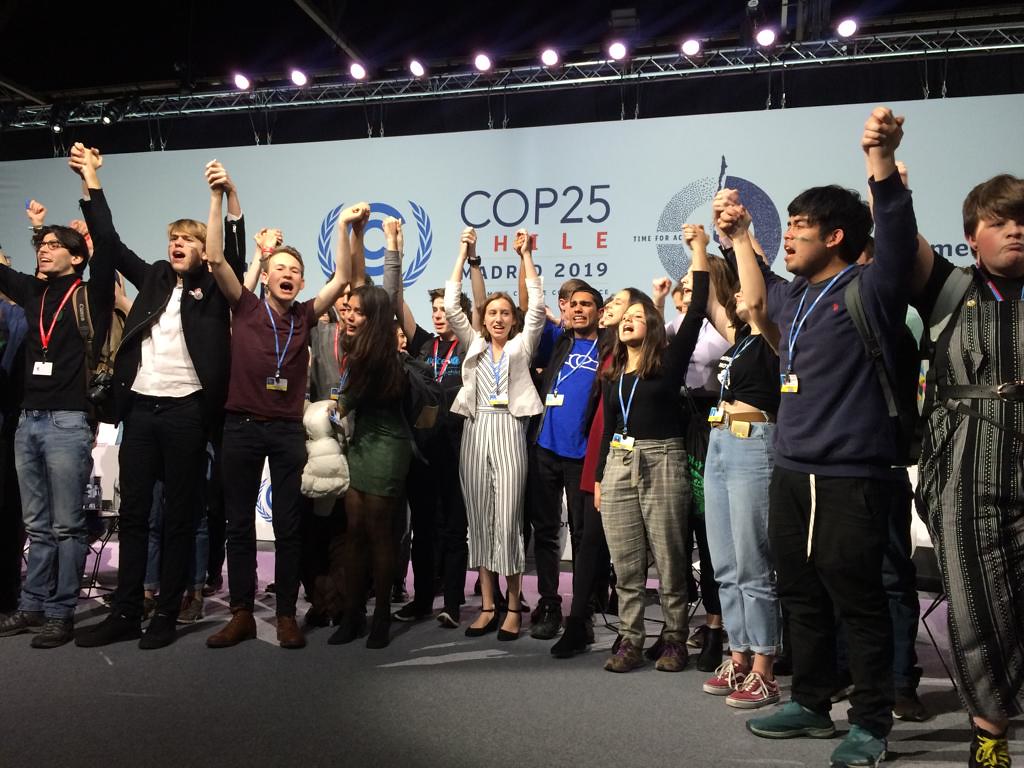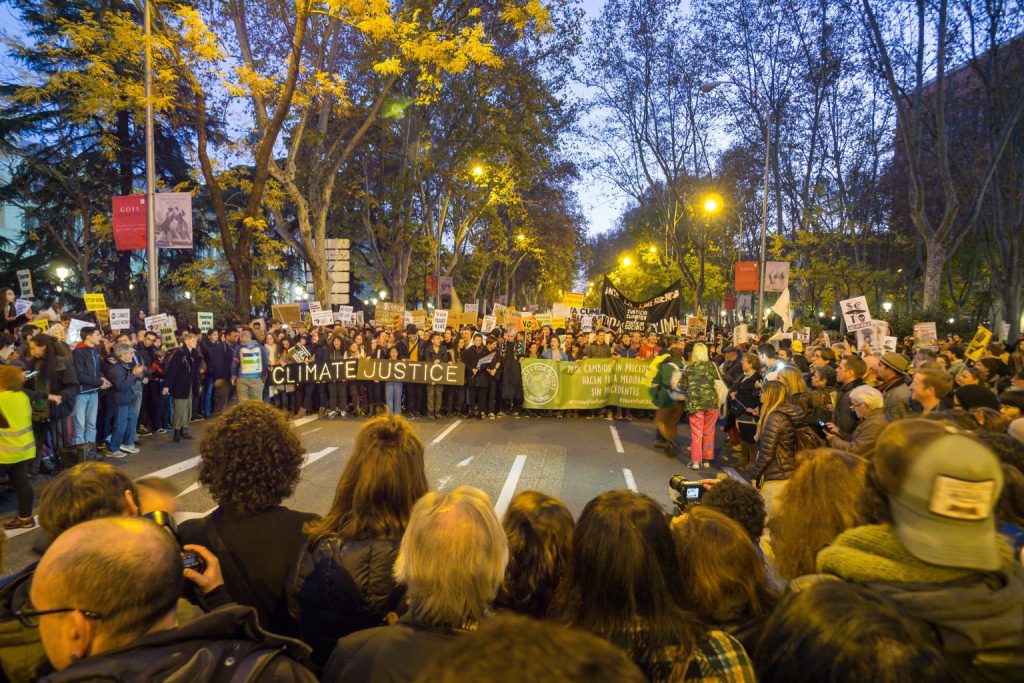What to Expect From the COP26 Meeting
This story was originally written by Sarah Fecht and published on the State of the Planet blog.

Tackling human-caused climate change and its impacts requires a monumental effort and global cooperation. That’s why representatives from all over the world have gathered at COP meetings nearly every year since 1995. Last year’s meeting was cancelled due to the pandemic.
The upcoming COP26 meeting, which will take place in Glasgow from October 31 to November 12, is being billed as “the world’s best last chance to get runaway climate change under control.” Science and policy experts from the Columbia Climate School will be attending and speaking at COP26. State of the Planet caught up with a few of them to learn more about the conference and what we should expect this year.
What is COP26, and why is it important?
COP26 is the 2021 United Nations climate change conference. “COP” stands for “Conference of the Parties,” meaning states that have signed on to the United Nations Framework Convention on Climate Change.
At COP meetings, representatives from nations that have agreed to the framework come together to negotiate ways to reduce greenhouse gas emissions and curtail the deadly effects of a changing climate.
Past COP meetings led to the creation of the Kyoto Protocol — an international treaty in which many countries agreed to reduce greenhouse gas emissions. It was the most ambitious climate treaty before the Paris Agreement was negotiated at COP21. At the COP meeting in Paris in 2015, nearly 200 nations committed to taking significant action to limit climate change to 2 degrees of warming or less. Subsequent COP meetings have focused on hashing out the details of the Paris Agreement, and COP26 will continue to work toward achieving the treaty’s goals.
“They’re working on implementation,” explained John Furlow, director of Columbia University’s International Research Institute for Climate and Society. “How do we measure the success or failure of the commitments? What is the appropriate mix of public and private financing to meet the commitment, and what are we doing about transparency? The devil is definitely in the details.”
Who goes to COP meetings, and what happens there?
The COP meetings bring together world leaders, citizens, scientists, and representatives of businesses, governments, non-profit organizations, and a variety of other groups. The result is a conference that feels like a mix between a research meeting and Comic Con, said Furlow, who has attended a dozen or so COP conferences as a negotiator, speaker, and spectator.
“The other members of civil society are there to provide expertise and input on [the negotiation] process, and to motivate a positive outcome,” explained Jason Bordoff, the co-founding dean of the Columbia Climate School and founding director of Columbia’s Center on Global Energy Policy. “A number of individuals will be in Glasgow representing Columbia University. As a global leader in climate change research, policy, and solutions, Columbia’s impact will be felt at COP26.”

Ahead of each COP meeting, the parties decide the major issues that must be negotiated. During the actual meeting, the Conference of the Parties launches the negotiations and closes them out, explained Furlow, and in the two weeks in between, there will be five or six meetings going on simultaneously to discuss the assigned topics. The biggest and most important meetings occur in a huge room where all countries have at least two seats, with space around the edges of the room for observers. There are also smaller meetings with fewer seats for observers, and some that are restricted to only country delegates. Some sessions are broadcast on the web or internally on televisions, while others are not.
“In parallel to the negotiations, it’s like a trade show,” said Furlow, with companies and organizations showing off their technologies and solutions for reducing emissions and adapting to climate impacts. Occasionally he has seen people walking the floor in a filthy polar bear suit to highlight the loss of habitat as polar ice melts, said Furlow, or a blackened Santa Claus suit to underline the fact that coal is the dirtiest fuel. A negative prize called The Fossil is given away each day to a country negotiator who makes the most unhelpful comment or objection during the meetings. “The U.S. has won a lot of Fossils,” said Furlow.
Along with the meetings and trade show, there are side events where people talk about their work and how they’ve solved a particular problem related to climate change. Furlow and colleague Mélody Braun will be participating in an event that will discuss how to bridge the gap between climate research and implementation — for example, how to make climate forecasts useful for agricultural workers in order to improve yields and combat hunger. That is the goal of the Columbia World Project “Adapting Agriculture to Climate Today, for Tomorrow” (ACToday), which Furlow and Braun help to lead.
Learn more about the Columbia Climate School’s events and activities at COP26.
What are the priorities for COP26, and what’s different this year?
At this year’s meeting, negotiators will be focusing on four goals, which are detailed on the meeting’s official website:
- Secure global net zero by mid-century and keep 1.5 degrees within reach. This will require countries to come up with ambitious plans to reduce their emissions.
- Adapt to protect communities and natural habitats.
- Mobilize finance. Under the Paris Agreement, developed countries committed to spending $100 billion to finance climate adaptation and emissions reduction.
- Enhance collaboration by defining and agreeing on the detailed rules of the Paris Agreement and accelerating action against climate change.
“A lot of the important issues coming up will be measuring how much progress we’ve made in terms of reducing emissions, following through on the funding commitments, and how we are helping countries adapt — particularly developing countries,” explained Furlow.
“What sets this year’s conference apart from previous ones is the level of urgency going into it,” said Bordoff. “The window to act on climate change is rapidly closing, and there are many who see this conference as one of the last chances to secure a globally coordinated approach to limiting global temperature rise to 1.5 degrees Celsius.”
What are the challenges to meeting these goals?
When the Paris Agreement was signed in 2015, the participating countries came up with plans to reduce their own emissions, and agreed that they would set more ambitious targets over time. COP26 is the first time that parties to the treaty will be expected to ramp up their efforts, and that will likely be challenging, since many countries have not met their initial goals.
“I think the news is going to be bad,” said Furlow. “When the U.S. announced it was withdrawing, there was a big sigh of frustration, and a lot of countries said, ‘What’s the point?’ I would not be surprised if there is a level of anxiety and frustration over trying to make progress when we’re seeing that countries are missing the targets they set in Paris.”
He added that the lack of action is particularly frustrating for developing countries, whose emissions are negligible but who face significant risks to climate impacts. They have contributed little to the problem, and they have little ability to solve it — they must depend on large countries and emitters to take action to effect any change.
To avoid the most devastating impacts of climate change, the global community needs to limit human-caused warming to 1.5 degrees or less. That goal requires dramatic measures to reach net-zero emissions by the middle of the century. To achieve these reductions, COP26 will emphasize the need to transition from coal to clean power, to accelerate the transition to zero-emission vehicles, and to protect and restore nature.
“What really matters is what actions are taken to reduce emissions and adapt to the climatic changes that are already happening,” said Furlow. “And while those actions can be committed to at COP, success or failure will be determined by what happens in countries when COP is over. The agreements to guide the world to success are in place; political will is what stands between the agreements and actual success.”

You must be logged in to post a comment.